
Nachem Malech Mailer, known by his pen name Norman Kingsley Mailer, was an American novelist, journalist, playwright, and filmmaker. In a career spanning over six decades, Mailer had 11 best-selling books, at least one in each of the seven decades after World War II.
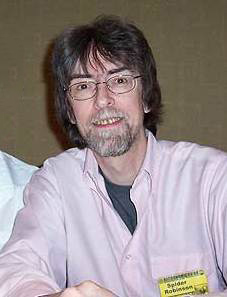
Spider Robinson is an American-born Canadian science fiction author. He has won a number of awards for his hard science fiction and humorous stories, including the Hugo Award 1977 and 1983, and another Hugo with his co-author and wife Jeanne Robinson in 1978.

The Naked and the Dead is a novel written by Norman Mailer. Published by Rinehart & Company in 1948, when he was 25, it was his debut novel. It depicts the experiences of a platoon during World War II, based partially on Mailer's experiences as a cook with the 112th Cavalry Regiment during the Philippines Campaign in World War II. The book quickly became a bestseller, paving the way for other Mailer's works such as The Deer Park, Advertisements for Myself, and The Time of Our Time. He believed The Naked and the Dead to be his most renowned work. It was the first popular novel about the war and is considered one of the greatest English-language novels. It was adapted into a film in 1958.
Cynthia Ozick is an American short story writer, novelist, and essayist.

An American Dream is a 1965 novel by American author Norman Mailer. It was published by Dial Press. Mailer wrote it in serialized form for Esquire, consciously attempting to resurrect the methodology used by Charles Dickens and other earlier novelists, with Mailer writing each chapter against monthly deadlines. The book is written in a poetic style heavy with metaphor that creates unique and hypnotising narrative and dialogue. The novel's action takes place over 32 hours in the life of its protagonist Stephen Rojack. Rojack is a decorated war-hero, former congressman, talk-show host, and university professor. He is depicted as the metaphorical embodiment of the American Dream.
Hip is a slang for fashionably current and in the know. To be hip is to have "an attitude, a stance" in opposition to the "unfree world", or to what is square or prude. Being hip is also about being informed about the latest ideas, styles, and developments.
Shabdangal ("Voices") is a 1947 novel by Vaikom Muhammad Basheer which talks about war, orphanhood, hunger, disease and prostitution. The whole length of the novel is a dialogue between a soldier and a writer. The soldier approaches the writer and tells him the story of his life. The writer takes down notes and asks questions to the soldier, and gives answers of his own to the soldier's questions. The novel faced heavy criticism at the time of its publication for its violence and vulgarity.

Marijane Agnes Meaker was an American writer who, along with Tereska Torres, was credited with launching the lesbian pulp fiction genre, the only accessible novels on that theme in the 1950s.

The White Negro: Superficial Reflections on the Hipster is a 9,000-word essay by Norman Mailer that connects the "psychic havoc" wrought by the Holocaust and atomic bomb to the aftermath of slavery in America in the figuration of the Hipster, or the "white negro". The essay is a call to abandon Eisenhower liberalism and a numbing culture of conformity and psychoanalysis in favor of the rebelliousness, personal violence and emancipating sexuality that Mailer associates with marginalized black culture. The White Negro was first published in the 1957 special issue of Dissent, before being published separately by City Lights. Mailer's essay was controversial upon its release and received a mixed reception, winning praise, for example, from Eldridge Cleaver and criticism from James Baldwin, Ralph Ellison, and Allen Ginsberg. Baldwin, in particular, heavily criticized the work, asserting that it perpetuated the notorious "myth of the sexuality of Negros" and stating that it was beneath Mailer's talents. The work remains his most famous and most reprinted essay and it established Mailer's reputation as a "philosopher of hip".

The terms hipster or hepcat, as used in the 1940s, referred to aficionados of jump blues and jazz, in particular bebop, which became popular in the early 1940s. The hipster subculture adopted the lifestyle of the jazz musician, including some or all of the following features: Conk hairstyles, loose fitting suits with loud colors, jive talk slang, use of tobacco, cannabis, and recreational drugs, relaxed attitude, love for Jazz or Jump blues music, and styles of swing dancing especially Lindy hop.
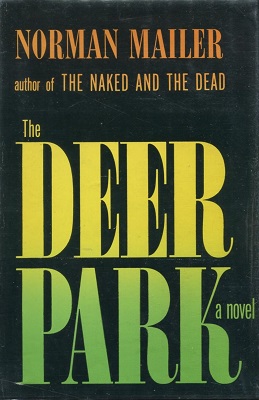
The Deer Park is a Hollywood novel written by Norman Mailer and published in 1955 by G.P. Putnam's Sons after it was rejected by Mailer's publisher, Rinehart & Company, for obscenity. Despite having already typeset the book, Rinehart claimed that the manuscript's obscenity voided its contract with Mailer. Mailer retained his cousin, the attorney Charles Rembar, who became a noted defense attorney for publishers involved in censorship trials.
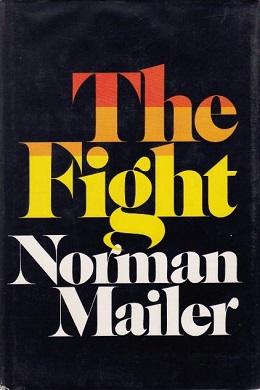
The Fight is a 1975 non-fiction book by Norman Mailer about the boxing title fight between Muhammad Ali and George Foreman at Kinshasa in Zaire in 1974, known as the "Rumble in the Jungle".
"The Time of Her Time" is a 1959 short story written by Norman Mailer, first appearing in his miscellany Advertisements for Myself. The story depicts macho Irish Catholic bullfighting instructor Sergius O'Shaugnessy and his sexual conquest of a young, middle-class Jewish college girl, Denise Gondelman. The short story was adapted to film in 2000 by Francis Delia. On multiple occasions, Mailer has touted "The Time of Her Time" as "the godfather of Lolita."
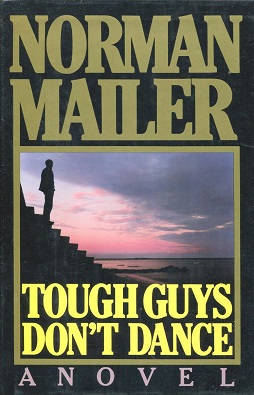
Tough Guys Don't Dance (1984) is a noir thriller and murder mystery novel by American writer Norman Mailer reminiscent of the works of Dashiell Hammett, Mickey Spillane, and Raymond Chandler. The novel was written in only two months in order to fulfill a contractual obligation. The book was adapted into a film, directed by Mailer, in 1987.

The Time of Our Time is an anthology of Norman Mailer’s various literary works, published by Modern Library in 1998. The work was designed to commemorate both the fiftieth anniversary of The Naked and the Dead (1948), and Mailer’s seventy-fifth birthday. Norman Mailer edited the anthology himself, choosing to organize the content not by the chronology in which the pieces are written, but the chronology of the events that the works describe; some of the excerpts are written in the midst of the action, while others may come upon forty years of reflection. Selected texts that deal with the ancient world, however, appear out of sequence at the end of the volume. Excerpts from Mailer’s most notable works, including The Naked and the Dead, Advertisements for Myself (1959), "Superman Comes to the Supermarket" (1960), The Armies of the Night (1968), Miami and the Siege of Chicago (1968), Of a Fire on the Moon (1970), and The Executioner's Song (1979), as well as several works in their entirety, including "The White Negro: Superficial Reflections on the Hipster" (1957), "The Time of Her Time" (1959), and various transcribed and annotated interviews with the likes of William F. Buckley, Gore Vidal, Kate Millett, and John Ehrlichman.

The Short Fiction of Norman Mailer is a 1967 anthology of short stories by Norman Mailer. It is grouped into eight thematic sections and contains nineteen stories, many appearing in one of Mailer's miscellanies; thirteen were published in periodicals or other anthologies before appearing in this collection. The collection was reprinted in hardcover in 1980 and some of the stories were reprinted in other volumes.

"The Man Who Studied Yoga", a novella by Norman Mailer written in 1952, was first published in the 1956 collection New Short Novels 2 then later in Mailer's 1959 miscellany Advertisements for Myself (AFM). It is a tale of a "writer manqué", or a writer who fails to write, reflecting some of Mailer's own anxiety in the 1950s as he tries to reinvent himself.
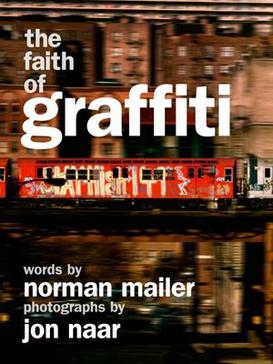
The Faith of Graffiti is a 1974 essay by American novelist and journalist Norman Mailer about New York City's graffiti artists. Mailer's essay appeared in a shorter form in Esquire and as a book with 81 photographs by Jon Naar and design by Mervyn Kurlansky. Through interviews, exploration, and analyses, the essay explores the political and artistic implications of graffiti. The essay was controversial at the time of publication because of its attempt to validate graffiti as an art form by linking it with great artists of the past. Some critics also said Mailer was using the essay as a platform to express his political grievances. Faith grew out of Mailer's existential philosophy of the hip, in which a Hipster is guided by his instincts regardless of consequences or perception, and upholds graffiti as a subversive and healthy check on the status quo. Like several of his other non-fiction narratives, Mailer continued his use of new journalism techniques, adopting a persona, the A-I or "Aesthetic Investigator", to provide both an objective distance from the topic and to engender the text with the creative and critical eye of the novelist.

The Prisoner of Sex is a book by Norman Mailer, originally published in 1971 in Harper's Magazine. He wrote the book in reaction to developments in women's liberation and technology. Written in the third person, it defends his writing against feminist writer Kate Millett.
"Pages from Cold Point" is a short story by Paul Bowles. It was first published in the Autumn 1949 issue of Wake: The Creative Magazine. It was republished in New Directions in Prose and Poetry #11. It later appeared in a collection of his short fiction, The Delicate Prey and Other Stories, published by Random House in 1950. Bowles wrote the story in 1947 while aboard the MS Ferncape en route to Casablanca from New York.















